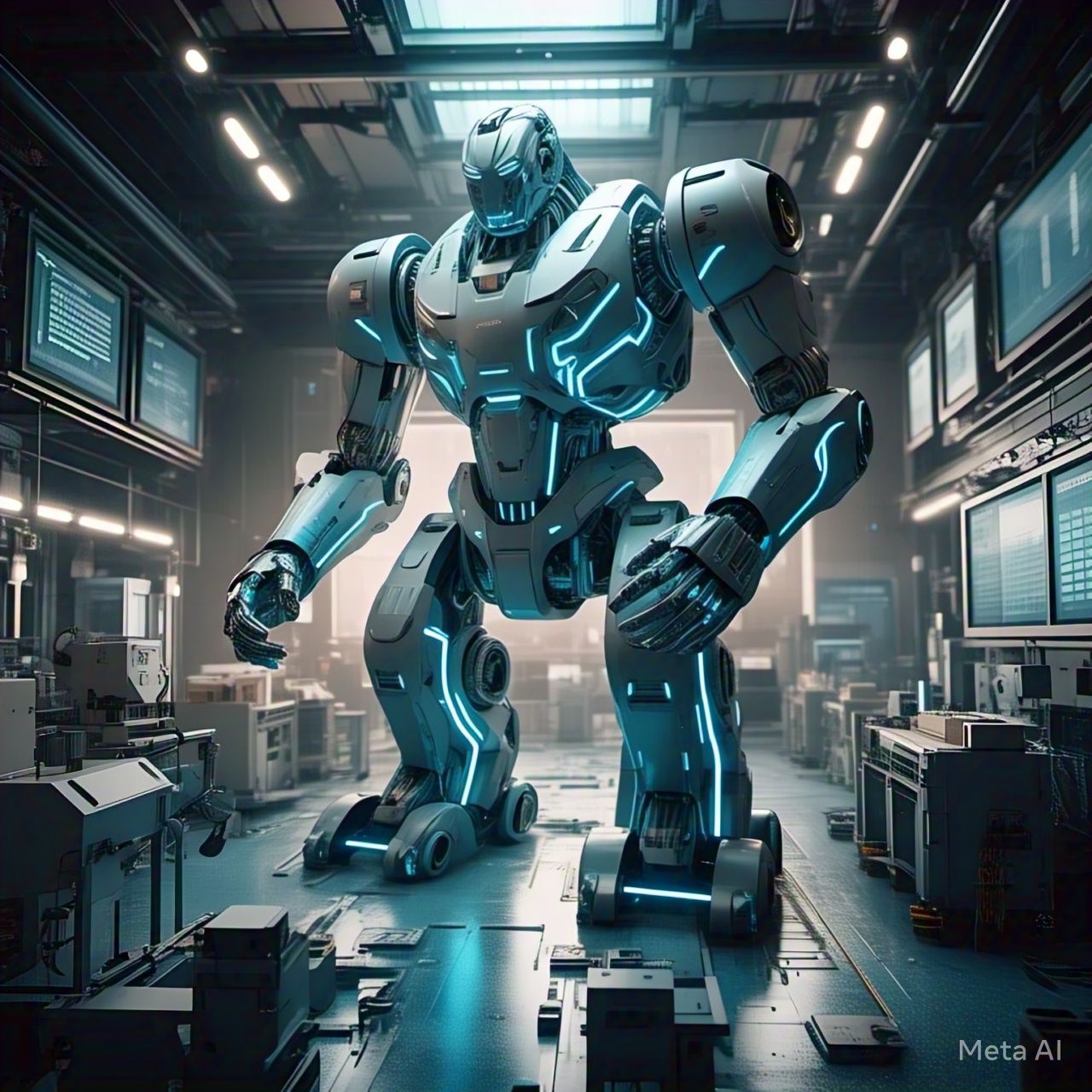Table of Contents
- Introduction
- The Evolution of AI Chips
- Superconductor AI Chips: Advantages and Challenges
- Neuromorphic Chips: Mimicking the Human Brain
- Key Players in the AI Chip Race
- Energy Efficiency and Processing Power Comparison
- Applications in Defense, Healthcare, and Big Data
- Challenges Facing AI Chip Development
- The Future of AI Computing
- Conclusion
- FAQs
1. Introduction
The world is experiencing an AI revolution, and at its core lies a fierce competition in semiconductor technology. The battle between superconductor AI chips and neuromorphic chips is heating up as tech giants, governments, and research institutions strive for AI dominance. But which technology will lead the future? This article explores the strengths, challenges, and potential winners of the AI chip race.
2. The Evolution of AI Chips
From traditional central processing units (CPUs) to graphics processing units (GPUs) and tensor processing units (TPUs), AI chips have undergone rapid advancements. However, conventional semiconductor materials like silicon are reaching their limits in power efficiency and speed. This has prompted the exploration of two emerging technologies:
- Superconducting AI Chips – Offering ultra-fast computation with near-zero resistance.
- Neuromorphic Chips – Designed to mimic the human brain, making them highly efficient in AI-based tasks.
3. Superconductor AI Chips: Advantages and Challenges
Superconductors allow for zero electrical resistance at cryogenic temperatures, significantly increasing processing speed while reducing energy consumption.
Advantages:
✅ Near-zero energy loss ✅ High processing speed and efficiency ✅ Scalable for large-scale AI applications
Challenges:
❌ Requires extreme cooling (cryogenic temperatures) ❌ Expensive manufacturing and maintenance ❌ Limited commercial adoption
| Feature | Superconductor Chips |
|---|---|
| Energy Efficiency | ⭐⭐⭐⭐⭐ |
| Speed | ⭐⭐⭐⭐⭐ |
| Scalability | ⭐⭐⭐ |
| Cost | ⭐⭐ |
| Commercial Viability | ⭐⭐ |
4. Neuromorphic Chips: Mimicking the Human Brain
Neuromorphic computing is inspired by the human brain’s neural networks. Instead of processing data sequentially like traditional chips, these chips process information in parallel, leading to lower energy consumption and higher efficiency in AI-driven tasks.
Advantages:
✅ Mimics the human brain, making AI decision-making more efficient ✅ Lower power consumption compared to traditional chips ✅ Highly effective for deep learning and edge computing
Challenges:
❌ Requires new programming paradigms ❌ Still in experimental phases ❌ Not yet optimized for general-purpose computing
| Feature | Neuromorphic Chips |
| Energy Efficiency | ⭐⭐⭐⭐ |
| Speed | ⭐⭐⭐⭐ |
| Scalability | ⭐⭐⭐⭐ |
| Cost | ⭐⭐⭐ |
| Commercial Viability | ⭐⭐⭐ |
5. Key Players in the AI Chip Race
Several companies and research institutions are investing in AI chips. The major players include:
- IBM – Leading in superconductor-based AI research
- Intel – Developing neuromorphic chips like Loihi
- Google – Pushing AI hardware innovations with TPUs
- Tesla – Advancing AI chips for autonomous driving
- MIT & DARPA – Exploring AI chips for defense and national security
6. Energy Efficiency and Processing Power Comparison
With AI workloads increasing, power efficiency and processing speed are crucial factors.
| Feature | Superconductor Chips | Neuromorphic Chips |
| Power Consumption | Low (Near zero) | Low |
| Processing Speed | Extremely Fast | Fast |
| Suitability for AI | High | High |
| Cooling Requirement | Cryogenic Cooling | Minimal |
| Commercial Use Cases | Limited | Growing |
7. Applications in Defense, Healthcare, and Big Data
Defense and Security
- Superconducting AI chips could power next-generation cybersecurity systems.
- Neuromorphic chips can improve real-time threat detection and response mechanisms.
Healthcare
- AI chips are already assisting in medical imaging and diagnostics.
- Neuromorphic chips could enhance AI-based disease prediction models.
Big Data and Finance
- AI chips are transforming high-frequency trading and fraud detection.
- Superconducting AI chips could enable real-time data analysis on an unprecedented scale.
8. Challenges Facing AI Chip Development
While both superconductor and neuromorphic chips show promise, there are significant obstacles:
- Material Constraints – Superconductor chips require specialized cooling environments.
- Manufacturing Costs – Neuromorphic chips need new production processes.
- Adoption Barriers – Traditional industries may be slow to integrate new AI hardware.
9. The Future of AI Computing
The AI chip race is far from over.
- Short Term: Neuromorphic chips are likely to gain widespread adoption due to their energy efficiency and ability to mimic human cognition.
- Long Term: Superconductor AI chips could become the gold standard if the cooling requirements are overcome.
Will we see a hybrid approach? Combining neuromorphic and superconducting technologies could create the most powerful AI chips ever developed.
10. Conclusion
The battle between superconductor AI chips and neuromorphic chips is shaping the future of artificial intelligence. While neuromorphic chips hold the edge in energy efficiency and commercial scalability, superconductors offer unmatched processing power. The future will depend on technological breakthroughs, industry adoption, and economic feasibility.
11. FAQs
Q1: What is the main difference between neuromorphic and superconductor AI chips?
Neuromorphic chips mimic the human brain’s neural networks, focusing on parallel processing and efficiency. Superconductor AI chips leverage zero electrical resistance for ultra-fast computation but require cryogenic cooling.
Q2: Which companies are leading the AI chip race?
IBM, Intel, Google, Tesla, and research institutions like MIT and DARPA are at the forefront of AI chip innovation.
Q3: Are superconducting AI chips commercially viable?
Not yet. The need for extreme cooling makes them impractical for widespread use. However, breakthroughs in cooling technologies could change this in the future.
Q4: Will neuromorphic chips replace traditional AI hardware?
Possibly. Neuromorphic chips have the potential to revolutionize AI processing, especially in edge computing, but traditional GPUs and TPUs will remain dominant for now.
Q5: Can superconductors and neuromorphic chips work together?
Yes, hybrid AI chips that combine both technologies could be the ultimate solution for high-performance computing with energy efficiency.
Citations
- IBM Research. (2023). Superconducting AI Chips: Future of Computing. Retrieved from IBM.com
- Intel Labs. (2023). Neuromorphic Computing: The Next Leap in AI Hardware. Retrieved from Intel.com
- MIT Technology Review. (2023). The AI Hardware Wars: Superconductors vs Neuromorphic Chips. Retrieved from MIT.edu




